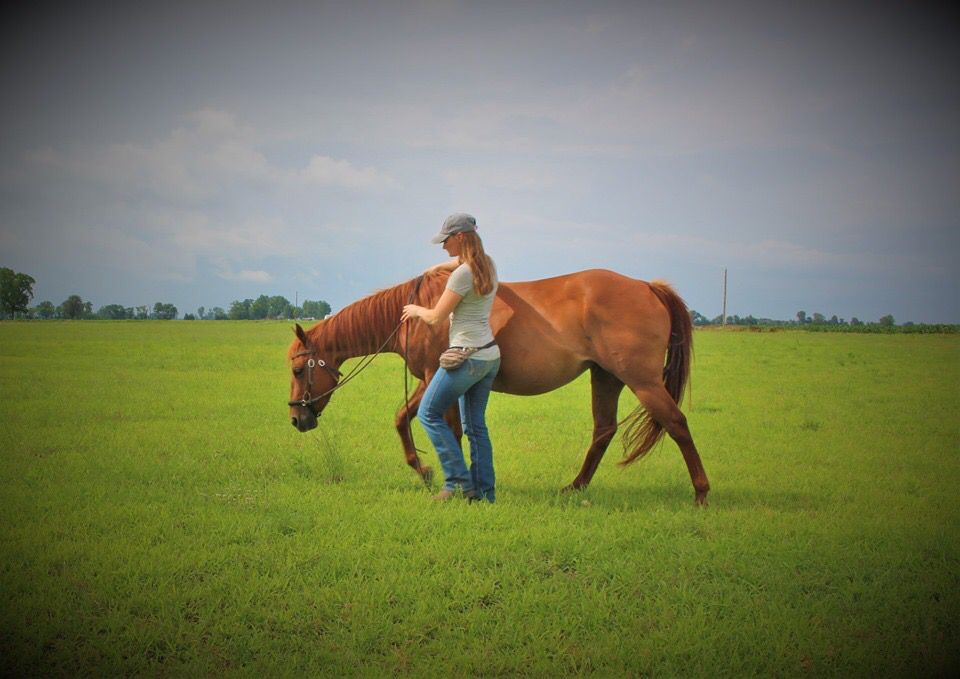|
From what you have heard about bitless bridles, you might think that removing your horse’s bit is the solution to all your problems. And for many horses, it does make a huge difference. The horse shows less stress and in turn is more responsive. So, you decided to give it a try with your horse and it wasn't quite the dream ride you were hoping for. Your horse ran away with you. You felt like you had an overall loss of control. Your horse was not responsive to your rein aids. Does that mean that your horse has to have a bit? Does bitless just “not work” for some horses? You might have been told that your horse has a hard mouth. Are “hard mouthed” horses not able to go bitless?
Horses that are described as having a hard mouth do not have anything wrong with them or their mouths. Some horses have higher levels of sensitivity which naturally makes them more responsive to bit pressure and other horses are just naturally a little duller. They require more pressure to produce a response. Poor training can also create horses who are not quick to respond to light pressure. Pulling unnecessarily on the horse’s mouth can teach the horse to ignore the pressure because it doesn’t mean anything. There is no response that he can offer that will cause the pressure to go away, and so he learns to just live with it. While there are many reasons that a horse can develop a hard mouth, it doesn’t mean you are stuck with an unresponsive horse forever. The problem that riders run into when they try bitless is that the aversive has been minimized. If your horse requires a strong aversive to produce a response, you may not be able to apply that level of pressure with a bitless bridle, because many gentle bitless bridles are inherently milder than bits. It is much the same as a horse who is accustomed to being ridden with spurs being ridden with a bare heel. It is difficult to get the horse to move or respond to the leg aids, because you do not have any means of escalating the pressure/aversive. Is there no help then for your horse? Does this mean you will always need a bit? Nope! This is where positive reinforcement/clicker training comes into play. In positive reinforcement, the motivation is not aversives. That means the horse is not working to avoid pressure, he is working to earn something he likes. This is a real game changer for heavy, dull, unresponsive, or hard mouthed horses. The motivation for stopping when using aversives is finding relief from the discomfort or pain the bit causes. Some horses learn easier than others that if they stop upon feeling light pressure, they can avoid the escalation or stronger application of pressure. Other horses take longer to learn this and some always require a stronger level of pressure. However, the motivation for stopping when using appetitives, is the addition of something the horse wants. This increases the horse’s motivation. With pressure and release or aversive only training, the horse will put in the minimal amount of effort required to avoid the aversive. They are not inspired to try very hard. However, when you add in something that they value, suddenly the horse is more engaged and their try has been boosted. For example, you might begin on the ground with your horse wearing a halter and lead rope. As the horse is walking along beside you, say whoa, stop walking, and apply some very light pressure to the halter as a tactile cue (a cue that can be felt). When the horse stops, I use a bridge signal, a click or the word “yes” will suffice, and then give the horse a food reward, like a few alfalfa pellets or a handful of their feed. Soon, the horse will learn that if they stop on your cue, they will get the food. As the horse becomes more solid, you can begin to fade the food rewards out, so that you are not feeding every stop, but only the really nice ones. After you have taught your horse how to stop on cue on the ground while leading, you might practice while lunging, that way the horse knows the cue in all three gaits. By the time you are ready to ride your horse, you will have a transferable cue that your horse already understands and happily responds to. This concept is the same as far as turning, half-halts, and downward transitions go. Mark the response you want to reward with your bridge signal and follow up with a food reward. I recommend teaching the horse to come to a complete stop first for safety reasons and so your horse understands the correct response to the rein aids. It is very easy to get downward transitions and half-halts when your horse has a good halt in place. There is a lot of free information available today about positive reinforcement and clicker training. If you’re struggling to transition from bitted to bitless, I encourage you explore this approach because it really is a game changer in many ways. Don’t get discouraged if your horse doesn’t transition beautifully to bitless the first time you give it a go. It just might take a little extra training to help him understand. It is the same idea when someone recommends a bigger or stronger bit for a horse that ignores the rider’s hands. Most people are quick to point out that the horse needs better training, not a stronger bit. And they are correct. If you are having a hard time trying to go bitless, your horse just needs a little more training and a different form of motivation!
0 Comments
Leave a Reply. |
AuthorChrissy Johnson shares her personal experiences and lessons learned training horses with reward based methods. Archives
July 2022
Categories |


 RSS Feed
RSS Feed